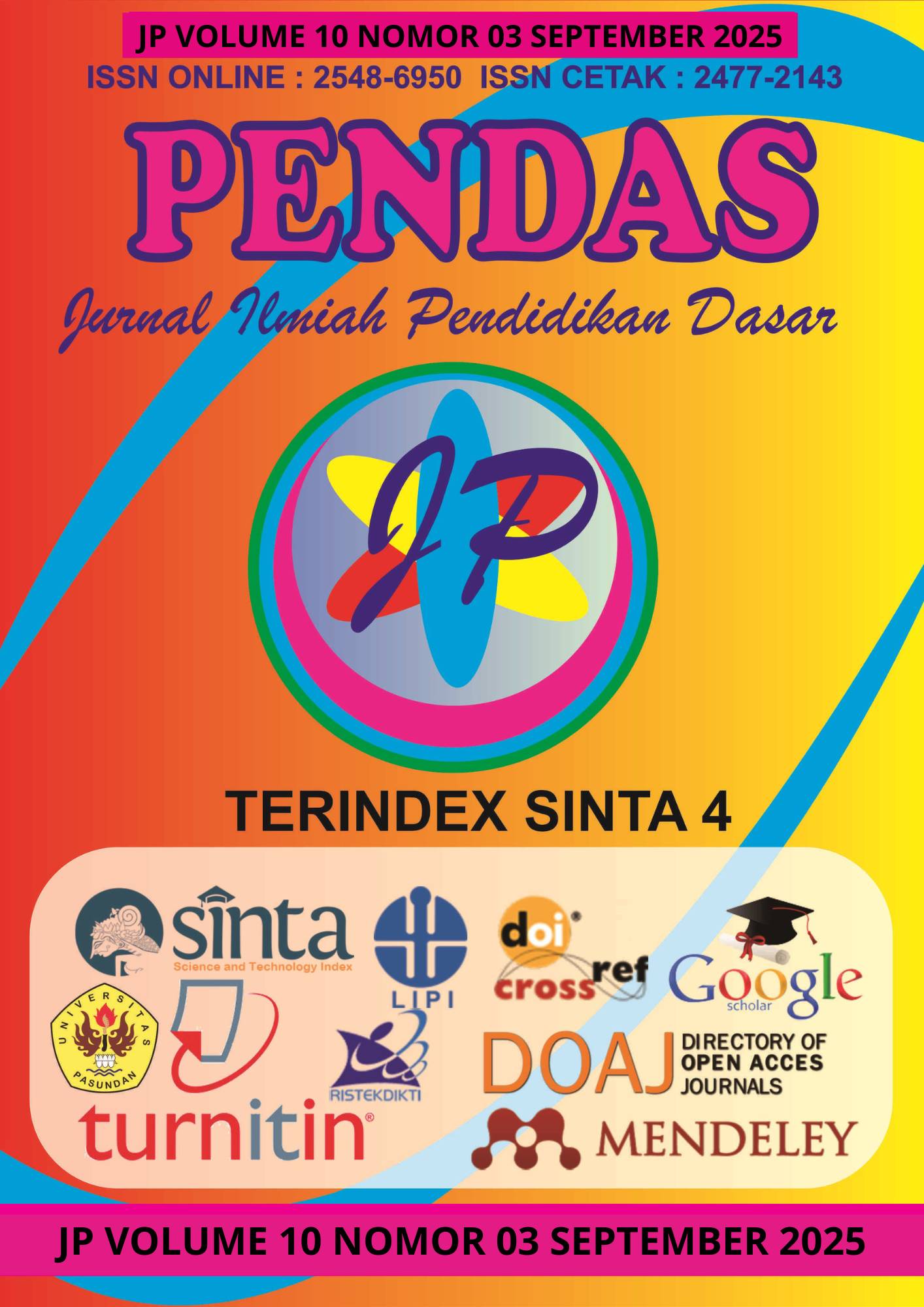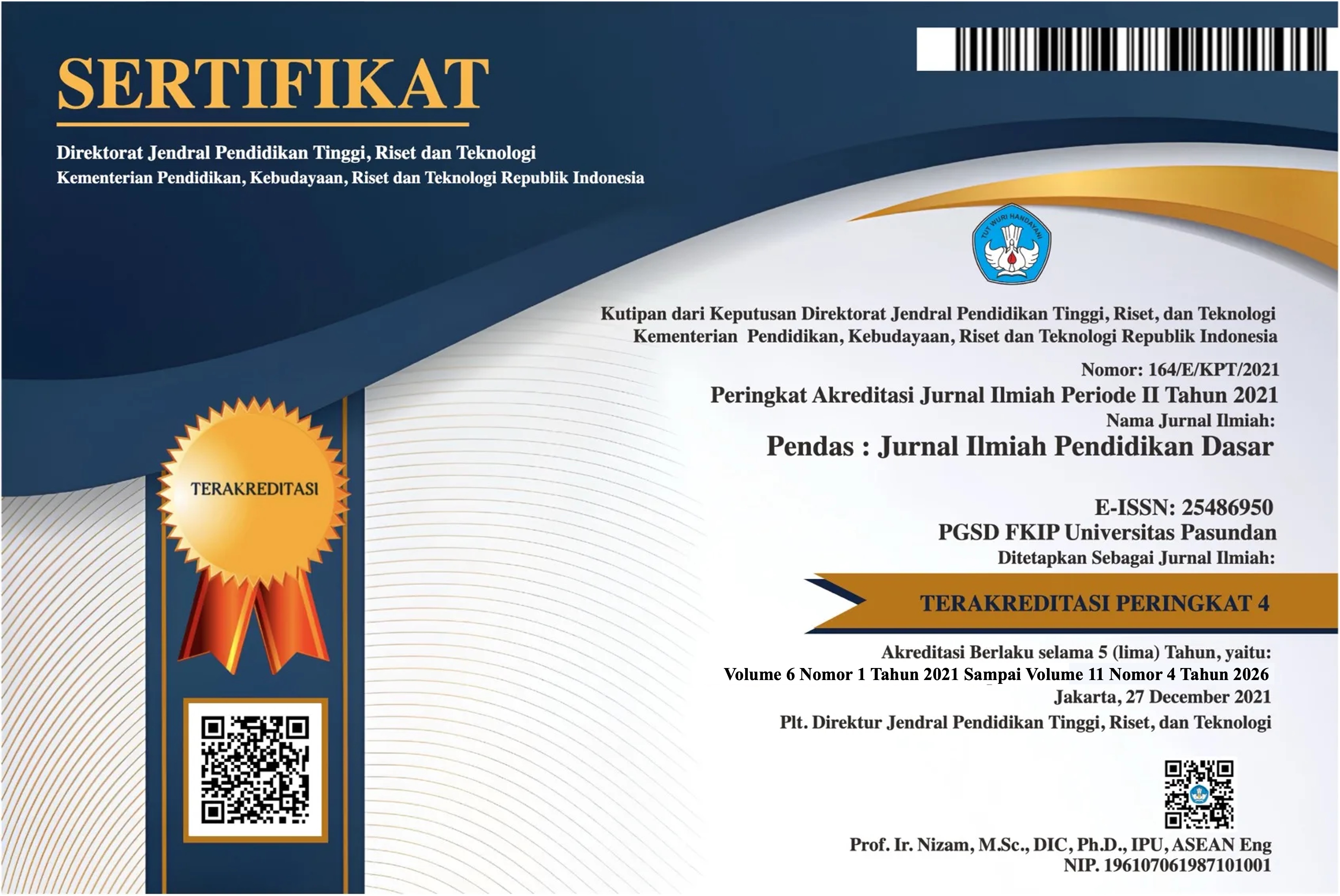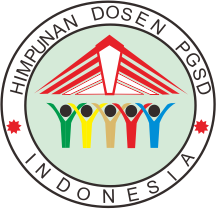PENGARUH MEDIA SPIN THE WHEEL TERHADAP HASIL BELAJAR IPAS PADA SISWA KELAS VI SD
DOI:
https://doi.org/10.23969/jp.v10i03.31868Keywords:
Spin the Wheel, IPAS, learning outcomes.Abstract
Education is vital for the development of Indonesia, as it is everywhere else. Over the past decade, incorporating digital tools into the classroom has significantly bolstered educational advancements. This research holds weight due to its investigation of the educational possibilities of modern technologies, including Spin the Wheel media. . At SDN Kebonagung 2 in the IPAS subject (a fusion of science and social studies) The study made use of the latest Indonesian Independent Learning Curriculum during the second semester of the 2024/2025 school year. Two groups were created from the sample: a control group not using Spin the Wheel media and an experimental group. Instruments The results of the research highlighted a considerable difference between the initial evaluation and the follow- up evaluation for all participant categories, particularly the experimental group. achieving a higher average gain of 78.17 compared to the control group’s 69.33. Out of 20 questions, 12 were declared valid based on the validity test, The consistency assessment displayed a Cronbach's alpha value of 0.800, which exceeds the 0.6 benchmark, indicating high reliability. The t-test results confirmed that the use of Spin the Wheel significantly improved learning outcomes. Furthermore, The learners in the tested group exhibited a remarkably elevated degree of involvement, with an observation score of 91.5%. Consequently, in addition to improving learning results, this medium raised primary level pupil involvement in the IPAS curriculum.
Downloads
References
Besare, S. D. (2020). Hubungan minat dengan aktivitas belajar siswa. JINOTEP (Jurnal Inovasi Dan Teknologi Pembelajaran): Kajian Dan Riset Dalam Teknologi Pembelajaran, 7(1), 18-25.
Fitrianti, E., Wulan, B. R. S., & Mubarok, M. K. (2024). Pengaruh Media Monopoli Angka Rahasia (MONARA) Terhadap Kemampuan Berpikir Kritis Dan Hasil Belajar matematika Kelas V Sekolah Dasar. Pendas: Jurnal Ilmiah Pendidikan Dasar, 9(3).
Hanafiah, P.A. (2023). Pengembangan Media Spinning Wheel Berbasis Unity Pada Pembelajaran IPAS. Joyful Learning Journal.s
Marinda, L. (2020). Teori Perkembangan Kognitif Jean Piaget Dan Problematikanya Pada Anak Usia Sekolah Dasar. An-Nisa’ : Jurnal Kajian Perempuan Dan Keislaman, 13(1), 116–152. https://doi.org/10.35719/annisa.v 13i1.26
Maulidiyah, Y., Mubarok, M. K., & Rahmawati, E. (2022). Pengaruh Metode Role Playing Terhadap Hasil Belajar Subtema Pekerjaan di Sekitarku Siswa Kelas IV SD. JIME (Jurnal Ilmiah Mandala Education), 8(1).
Nurbudiyani, I. (2013). Pelaksanaan pengukuran ranah kognitif, afektif, dan psikomotor pada mata pelajaran IPS kelas III SD Muhammadiyah Palangkaraya. Anterior jurnal, 13(1), 88-93.
Rahmawati, A. N. (2022). Peran Pola Asuh Orang Tua Milenial Terhadap Pembentukan Keterampilan Berpikir Abad
21. Jurnal Bimbingan dan Konseling Islam, 12(1), 21-36.
Rahmawati, D. Y., Wening, A. P., & Rizbudiani, A. D. (2023). Implementasi Kurikulum Merdeka pada Mata Pelajaran IPAS Sekolah Dasar Diana. Jurnal Basicedu, 7(5), 2873–2879.
Shafa, S. (2014). Karakteristik Proses Pembelajaran Kurikulum 2013. Dinamika Ilmu, 14(1), 81-
96.
Sholichah, L., Rahmawati, E., & Dewi,
G. K. (2022). Pengaruh Model Think Pair Share Terhadap Hasil Belajar Siswa Sekolah Dasar. Jurnal Basicedu Vol, 6(1). Suwardana, H. (2018). Revolusi Industri 4. 0 Berbasis Revolusi
Mental.
Tia, T.N., Puang, D.M., & Bunga, M.H. (2023). Pengaruh Media Roda Putar Terhadap Hasil Belajar Matematika Pada Siswa Kelas II Sekolah Dasar. JUDIKA (Jurnal Pendidikan UNSIKA).
Wijanarko, Y. (2017). Model Pembelajaran Make a Match Untuk Pembelajaran Ipa Yang Menyenangkan. Taman Cendekia: Jurnal Pendidikan Ke- SD-An, 1(1), 52–59. https://doi.org/10.30738/tc.v1i1.1 579
Downloads
Published
Issue
Section
License
Copyright (c) 2025 Pendas : Jurnal Ilmiah Pendidikan Dasar

This work is licensed under a Creative Commons Attribution 4.0 International License.



















